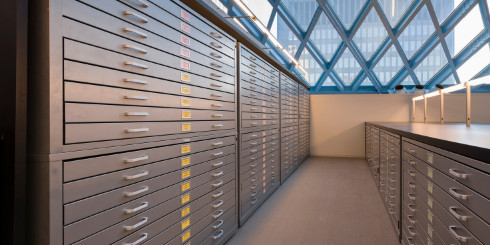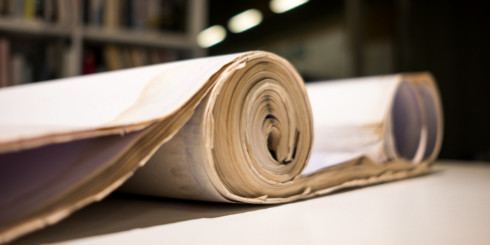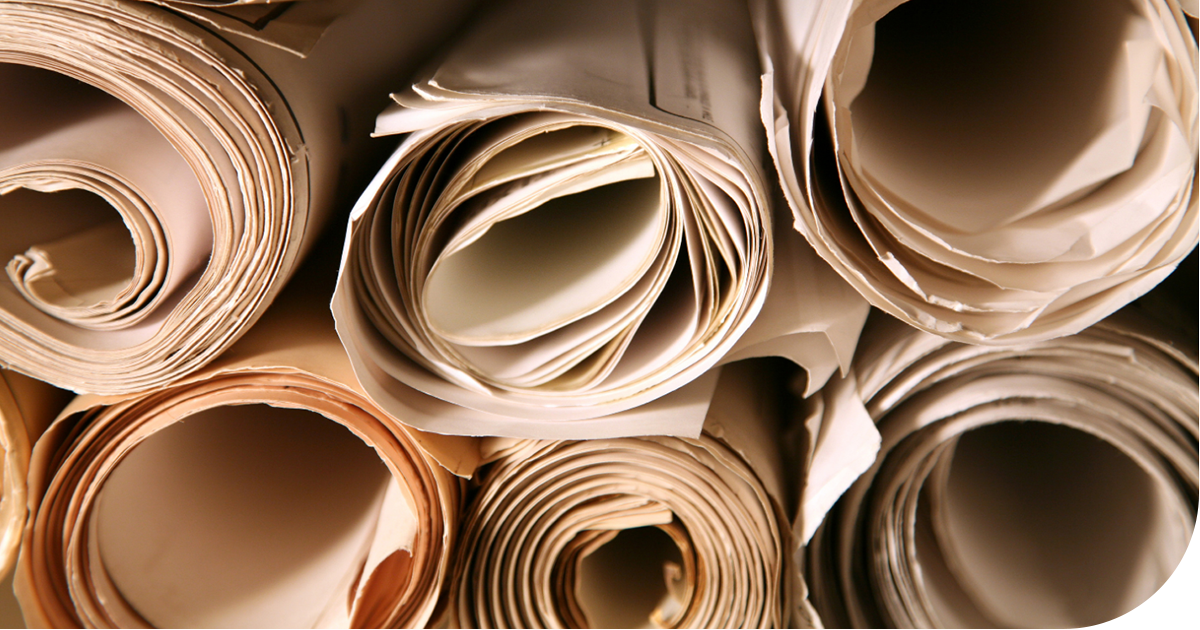To study, process, identify, photograph or re-house large paper items such as maps, prints, and drawings, planning is crucial.
Safe Handling
- Find a clean, flat surface on which to work.
- Before lifting and moving any objects, ensure you have a clear path.
- If the object is unmatted, carefully lift it from its storage space by picking it up from two opposite corners. The paper can sag slightly in the middle, but not too much.
- If the item is fragile or too large to hold, use a large rigid backing board as a tray, carefully slide it onto the board, and carry it with two people to the work area. Use this same tray method for large-mounted materials if the mounting looks brittle or fragile.
Enclosures
- Select primary enclosures that provide adequate support
- Use folders made of a heavier weight 10-20 pt. stock or 4-5mil polyester film.
- Documents should be sorted and grouped by size with no more than 10-12 in an enclosure.
Flat Storage

For small collections, folders may be stored flat in drop-front storage boxes. Do not stack storage boxes more than two high, as their weight may make them hard to handle. Try to keep the boxes as horizontal as possible when moving.
Large collections of oversized maps, posters, architectural drawings, etc. are best stored inside folders in metal flat files. Try to keep like-sized items together. When not in folders, place interleaving sheets between items for added protection and support.
Rolled Storage

For blueprints or large documents that are rolled and are difficult to flatten or large collections in limited space, rolled storage is an option that saves space and protects the item from light, dust and other pollutants. Buffered tubes are better except for blueprints (which need unbuffered storage) and documents should be interleaved with tissue or other paper.
- For most items, roll the item, front side in, over an archival tube at least 4" in diameter.
- Make sure the tube is longer than the item by at least 2" so that the edges will be protected.
- Place a sheet of interleaving paper on the reverse so that as you roll the item, the interleaving paper provides a barrier and a cushion.
- Once rolled, cover the item with archival polyester film or archival wrapping paper.
- Secure with cotton typing tape.
- Store the rolled tubes on a shelf horizontally (do not stack), or place a rod through the tube and hang it on a storage rack.
If a document has been rolled for a long period, it may be too brittle to unroll without causing damage. These items should be sent a conservator, who can flatten the item safely.
Note: If your collection is of historical value, we recommend you consult a conservator. Find one near you via the American Institute for Conservation of Historic and Artistic Works’ (AIC) Find a Conservator tool.

